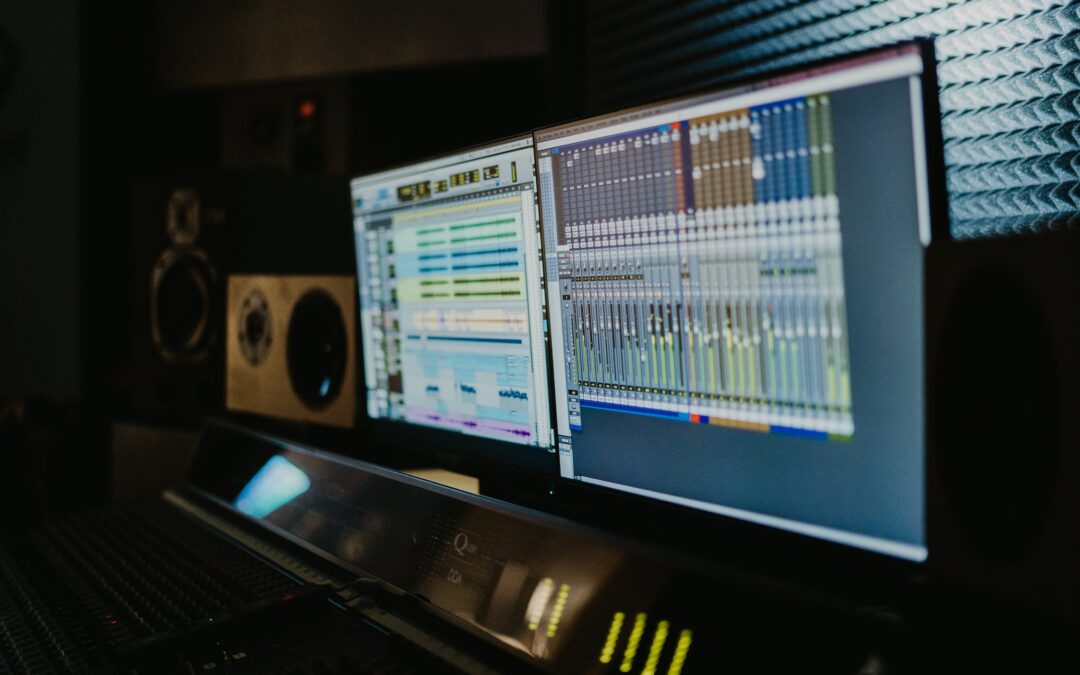Introduction
Mixing vocals is a critical aspect of music production that can make or break a track.
Whether you’re an aspiring musician, a hobbyist producer, or a home studio enthusiast, understanding the fundamentals of vocal mixing is essential to achieve a polished, professional sound.
In this blog post, we will delve into the world of vocal mixing, exploring various techniques and insights that will help you elevate your mixing skills and create captivating vocal productions.
Understanding the Vocal Track
To embark on a successful vocal mixing journey, it is crucial to comprehend the nuances of the vocal track itself.
A clean and well-recorded vocal is the foundation for a professional-sounding mix. Renowned music producer Rick Rubin emphasizes the significance of capturing a quality vocal performance from the start.
He suggests that creating the right environment and ensuring the artist’s comfort during recording are key factors in achieving an exceptional vocal take.
Additionally, analyzing the vocal performance is crucial. Greg Wells, a Grammy-winning producer, often listens to the vocals in isolation to identify any potential issues.
This allows him to address recording imperfections, such as background noise, pops, clicks, or excessive sibilance.
By fixing these issues before diving into the mix, you lay the groundwork for a smoother and more impactful vocal sound.
Preparing the Vocal Track
Before diving into the mixing process, it’s essential to set up your vocal track for optimal efficiency.
Start by organizing and labeling your vocal files, ensuring a streamlined workflow throughout the mixing session. This simple step will save you valuable time and prevent confusion later on.
Next, apply corrective processing techniques to address common recording issues. Noise reduction tools, such as iZotope RX or Waves NS1, can help remove unwanted background noise or hum.
De-essers are invaluable for taming sibilant sounds and controlling harsh “S” or “T” sounds in vocals. Take cues from top audio engineers like Manny Marroquin, who advises using these tools sparingly and subtly to maintain the natural character of the vocals.
Balancing the Vocal in the Mix
Achieving the perfect vocal balance is paramount in any mix. The vocals should serve as the focal point, delivering the emotions and lyrics of the song while complementing the instrumental elements.
Mixing engineer Chris Lord-Alge suggests starting by setting the vocal level at a comfortable listening volume, then adjusting other elements around it.
Panning is another critical consideration. Most vocals are typically panned center to maintain a strong, present sound.
However, experimentation with subtle panning or double-tracking techniques, as observed in songs by The Beatles or Radiohead, can add depth and dimension to the vocals, creating a more immersive sonic experience.
Equalizing the Vocal
Equalization plays a vital role in shaping the tonal characteristics of the vocal track.
Understanding the frequency range of vocals is crucial for achieving clarity and addressing any problematic frequencies.
For instance, boosting the presence around 2-5 kHz can enhance the intelligibility and bring the vocals forward in the mix.
Grammy-winning mixer Andrew Scheps advises against overdoing EQ, cautioning that excessive boosting or cutting can result in an unnatural sound.
Instead, make subtle adjustments to maintain the natural timbre of the vocalist’s voice while ensuring it sits well within the mix.
Dynamics Processing for Vocals
To achieve a consistent and controlled vocal sound, dynamics processing is essential. Compression is a powerful tool in evening out vocal performances and maintaining a steady volume level.
Mix engineer Serban Ghenea suggests using compression transparently, aiming for a smooth and natural sound.
Setting optimal attack and release times is crucial in preserving the dynamics and emotions of the performance.
Experimenting with parallel compression, a technique frequently used by producer Jack Antonoff, can add depth and impact to the vocals without sacrificing their natural dynamic range.
Creative Effects for Vocals
Incorporating creative effects can elevate the vocals and add artistic flair to your mix. Reverb and delay are popular choices for creating a sense of depth and space around the vocals.

Super-producer Metro Boomin in the Studio, 2022
Consider the classic ballads by Adele or the ethereal vocals of Bon Iver as examples of tasteful reverb usage. Modulation effects such as chorus or flanger can introduce movement and texture to the vocals, making them more captivating.
The iconic use of vocal modulation in songs by artists like The Police or Tame Impala demonstrates the artistic possibilities of these effects.
Automation Techniques
Automation is a powerful tool for adding dynamics and shaping the overall vocal performance. Volume automation allows you to control the vocal level throughout the song, creating smooth transitions and emphasizing key moments.
Grammy-winning engineer Tony Maserati suggests focusing on phrases or individual words to make them stand out in the mix.
Additionally, automation can be used to add subtle effects, such as automated delays or reverbs during specific sections, to enhance the dramatic impact of the vocals.
Experiment with automation to bring your vocal mix to life and convey the intended emotions.
Enhancing Vocals with Harmonic Processing
Harmonic processing techniques can add warmth, character, and depth to the vocals. Saturation and distortion plugins, when used tastefully, can impart a vintage vibe or a touch of grit to the vocals.
Legendary producer-engineer Mike Dean is known for utilizing distortion to create a unique and edgy vocal sound in hip-hop and trap genres.
However, it is crucial to exercise caution when applying harmonic processing. Overdoing it can lead to an unnatural or harsh sound.
Preserve the natural qualities of the vocals and ensure the harmonics enhance rather than overpower the overall mix.
Finalizing the Vocal Mix
Before calling the vocal mix complete, it’s essential to assess it in the context of the entire song. Comparing the vocal against other elements, such as the instrumental tracks, will help ensure a balanced and cohesive sound.
Make small adjustments to levels, EQ, and effects to achieve the perfect blend between the vocals and the rest of the mix.
Once you’re satisfied with the vocal mix, it’s time to export the final product.
Choose an appropriate file format and ensure the mixdown retains the nuances and intricacies of the vocals. This step marks the culmination of your efforts and sets the stage for a professional-sounding track.
Check out: 10 Music Production Workflows and Strategies
Conclusion
Mixing vocals as an amateur audio engineer can be a challenging but rewarding endeavor.
By understanding the fundamental principles and techniques explored in this blog post, you’ll be well-equipped to transform your vocal mixes from amateurish to professional-sounding.
Remember, practice and experimentation are key to honing your skills, so don’t shy away from trying new approaches.
Embrace the wisdom shared by renowned music producers and always strive for a mix that showcases the unique qualities of the vocals while complementing the essence of the song.
With dedication and perseverance, you’ll be well on your way to creating captivating vocal productions.






